Catching AMS is easier done than said!
Don’t you feel so?
AMS (Acute Mountain Sickness) approaches everyone and unfortunately worst affected are the most experienced ones. They feel that they know it and can counsel any new-comer on the do’s and don’ts but when it hits them, they find it difficult to digest.
The fact is that not even the High Altitude medical practitioners are sure about AMS and its remedies. There can be various reasons for no clear guideline to protect against or get cured of AMS but I feel the biggest reason is the fact that it is not a disease as such. A body’s reaction to climatic change will always be very individualistic and no two bodies are expected to react identically. However, having said that, the industry that deals with High Altitude experiences cannot remain stationary till there are clear guidelines.
So, the practice till now has been to follow a set of norms – contributed by a combination of medical advisories, local (Himalayan) beliefs and practices, and experiential learning.
I have compiled a few key learnings based on my experience in the field and confirmed by a recently published booklet by Instt. Of Nuclear Medicine & Allied Sciences, DRDO. So, before I list out a few do’s & don’ts, let me share the key learnings with you:
- Evenings may show lower SPO2 levels compared to mornings in non-acclimatized persons
- This may be due to the clearance of accumulated lactate in the blood.
- Shouting or too much of chatting (loudly) accentuates mountain sickness in non-acclimatized persons
- This may be due to a simple fact that shouting is a mild exercise that interferes with an already struggling breathing process.
- Sleeping immediately post-meal can accentuate the symptoms of mountain sickness
- The reason may be peripheral pooling of blood (in certain parts of the body, reducing availability to others) coupled with low adrenergic drive (crudely understood as availability of adrenalin) at sleep
- Medium temperature settings are better for acclimatization, compared to extreme cold or extreme warm settings. A range between 22 – 25*C can be considered as ideal
- The reason may be cutaneous vasodilation (widening of the lumen of blood vessels around the skin) that contributes to peripheral pooling of blood
- Exposure to Kerosene fumes in closed setting (Kitchen Tent) accentuates the symptoms of AMS in non-acclimatized persons
- Dry & Cold air, as popularly believed, accentuates the symptoms of AMS
- Gastric symptoms are persistent in even the acclimatized persons in high altitude areas. Thus all actions required to reduce the stress on the digestive system need to be taken.
Do let me know your views by commenting below on the learnings above.
Let us now come to the remedy part. While the list of suggestions from locals and regular trekkers is long, I am so glad that INMAS has actually tested most of them and come out with a list of verified remedies with possible explanations. So, here it is:
Expedition Planning:
- Breaks / Rest in High Altitude expeditions are critical and should ideally be part of the itineraries. Also, travelers should add rest days at the beginning of high-altitude expeditions over and above the pre-set itineraries in case they have very less exposure to high altitude areas.
- Travelling light is important to reduce the stress for better acclimatization. Try to use minimum items for max use to reduce the weight of your backpack as much as possible. Read here on how you can do this.
- Yoga, especially the breathing exercises or certain Pranayams help a lot in the process of acclimatization. Basically forced expiration followed by full inspiration helps in increasing the blood O2 level.
Food & Eating habits (for non-acclimatized persons):
- Small and multiple meals are better instead of the standard 3 meals pattern. Smaller meals are easier on the digestive system and help prevent the peripheral pooling of blood.
- Following the decreasing order of meal quantity (as prescribed mostly even in plains), with biggest meals in the morning and thinnest ones in the evening, is good for better acclimatization. Thus, an early dinner or even consuming only liquids in the evenings is also fine.
- Most people believe that one should consume as much water as possible. However, it has been observed that at extreme altitude (above 14,000 feet), limited water intake is better for acclimatization for people who are not acclimatized. Experts suggest that this might be due to the added cardio-pulmonary stress on the body system (till the kidney clears the excess load).
- Eat your meal in sitting position. Eating while walking or standing is not recommended.
- Food consumed should neither be too hot, nor cold.
- Sipping rather than gulping liquids is good (even water).

Menu & Food Items related
- Low sodium and high potassium diet are recommended for regular meal planning for the high altitude areas. Thus lower salt levels and fruits like bananas are recommended.
- Low protein, low-fat diet reduces the stress on the digestive system. Thus, semi-digested carbohydrate meals like roasted oatmeal, porridge, upma, etc. are good.
- Honey is a good inclusion in the meals because it has a direct impact in reducing the headache. It draws out water from extracellular space, can also help in Brain Edema.
- Food with less than 2 mm particles should be preferred. Items like Rice, Upma, Poha, Porridge, Suji, and boiled sprouts are good for the HA expeditions.
- High roughage should be preferred. Thus Chilka Dals should be preferred over milled ones, maida must be avoided, whole wheat or millet is a much better cereal to add, items like Missi Roti are good.
- Curd, Yogurt, Shrikhand and other such items with healthy pro-biotic content are better. Milk should be avoided because it is very difficult to digest in such conditions.
- Alcohol must be completely avoided in HA conditions, even by the acclimatized persons.
- Black Salt should be preferred over normal salt because it helps in cutting sodium and is rich in Potassium.
- Fried items like chips, crackers, etc. must be avoided
- Frequent usage of garlic in meals helps
- Other supplements that should be preferred:
- Vitamin tablets for long stays in high altitude areas
- Calcium and Vitamin D for long stays
- Isapgol & allied products
- Sprouts
- Anti-Oxidants (Lemon/black/green tea is a good source)
- Herbal products with high level of micronutrients like potassium
Camping & rest related
- Keeping your feet up and head down can help a lot in reducing headache.
- Sleeping on the side, especially right side, is better than sleeping on the back or the chest.
- Covering the face with a thin piece of cloth or shawl or wool helps in conserving the heat and humidity.
- At least 2-3 hours of gap should be maintained between the meals and sleep
- Humidify the sleeping tents with boiling water if possible.
- When in the non-acclimatized state, frequent mouth breathing helps a lot in increasing the oxygen supply but this can have a significant drying effect on the oropharynx (below the soft palate and above the epiglottis and is continuous with the mouth). So, it should be followed by frequent gargling or wetting of the oropharynx.
- Frequent gargling helps in humidifying the respiratory channels. Thus, it is recommended while camping in HA areas.
- Playing mouth organ or blowing a conch is good respiratory exercises that can be done in high altitude areas (in sitting position only).
Physical work & walking related
- Antigravity exercises are preferred which means one should exercise lying down or exercise with arms when in the non-acclimatized state.
- Any exercise after food must be avoided.
- Masks are very helpful while climbing or trekking or even resting in high altitudes. It can help in conserving heat & humidity while breathing in cold conditions. It also increases the CO2 in the respired that can improve blood O2 level.
- Step & shoot walking style is better than continued & prolonged effort. Frequent breaks while walking help in bringing homeostasis (equilibrium) in body functions.
- Keeping the belt or pants loose help. Tight trousers or belt causes restriction to abdominal muscle movement.
Some simple diagnostics for a common trekkers or travelers in High Altitude
- Uphill Walk test – the funda of this test is simple. If a person is showing significantly lower SPO2 levels and increase in the heart rate after minimal stress, then he/she is physically not prepared for the time being at that altitude and further ascent should be avoided. The test can be convened using the following table. Just make a person walk for xyz mins (as defined in the table below) and take the readings on heart rate, SPO2 level, and distance covered:

The readings should be first taken for people who are well acclimatized to the conditions in order to set the benchmark. I usually find the readings taken from local persons as a good benchmark, those who are feeling good on the high altitude camps. The benchmark readings should be compared with others in the group in order to understand the acclimatization situation.
- Use the pulse – oximeter in standing up position for measuring SPO2 levels and heart rate.
- Pre & Post-meal readings of oximetry parameters are a good indicator to assess the acclimatization process. Significant fall in the readings is good indicators of a non-acclimatized state.
and some simple Therapeutics
- Acetazolamide (250 mg) twice a day for 2-3 days has a decent preventive effect and can help in faster acclimatization. However acetazolamide (popularly known as Diamox) is a mild diuretic (increased excretion of urine), and thus higher intake of water is recommended for those who are consuming the drug. The intake of this medicine has become very popular and many a time, people start taking the same even without coming into the high altitude areas. The drug can only assist in acclimatization while the person follows a proper acclimatization schedule.
- Antacids like Gelucil and Digene help to reduce the stress in the digestive system.
- H-2 blockers like Ranitidine are also helpful in neutralizing the gastric effect in addition to the antacids above (only when antacids are not enough on their own)
- Paracetamol is the preferred Pain Killer in high altitude areas for managing headache (250 mg) because aspirin has a higher likelihood of gastritis.
I am not repeating the long list of medicines required to be carried for advanced stages like Oxygen cylinders, Nefidipine or Dexamethasone, etc. because they are mostly carried only by the professional trekkers or expedition guides who are well trained in high altitude first aid. Have just included some common medicines that anyone can carry with him/herself.
The last section of my write-up is on the acclimatization procedure recommended for high altitude expeditions.
Acclimatization Procedure
This is the ideal acclimatization procedure and is designed considering that ascent is continuous. Adjustments would be made in this schedule basis the target height to be achieved. For instance, if one is going to a trek where the max altitude is 11500 feet, then even the complete schedule of stage 1 would not be realistically applicable.
- Stage 1 (9000 to 12000 ft.) : 4 to 6 days
- Day 1 & 2 : Rest more with Short walks, less climb
- Day 3 & 4 : 2 to 3 Kms hikes without load. Less steep climb
- Day 5 & 6 : 5 or more Kms walk with load and gain of 300 mts of altitude
- Stage 2 (12000 to 15000 ft.) : 4 days
- Day 1 & 2 : 1.5 to 2 Kms walk without load, no steep climbing
- Day 3 & 4 : 3 Kms hike without load, 300 mts climb without load
- Day 5 & 6 : 3 to 5 Kms walk with load and gain of 300 mts of altitude
- Stage 3 (15000 to 18000 ft.) : 4 days : Same steps as prescribed in point #2.
- Stage 4 (18000 to 26000 ft.) : Known as Deteriorating Zone. No acclimatization happens here so we spend as less time as possible in this zone.
Stage 5 (> 18000 ft.) : Known as Death Zone. Your cells are dying here and you need to come back without losing all of them. However, the opportunity to enter this zone is not freely available and it would be the craze inside you that would save you here.
As I said, to begin with, the thumb-rules shared above are based on some readings put together with my own experience in the high altitude. This by no means is a guideline for high altitude and any individual or organization should assess their particular situation and check with experts (to whom they may have access) before changing their procedures or following any advice from above article.
I have tried to summarize all aspects related to acclimatization in the article here. Hope it helps.



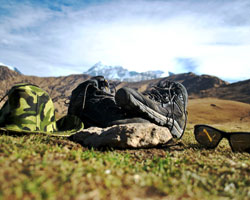


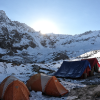




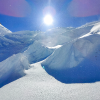
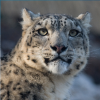
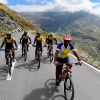
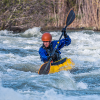
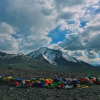

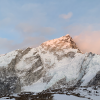
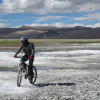
Bro, thanks lot. Have googled a lot about AMS didn't get clear info about it. Your article looks simple and logical.